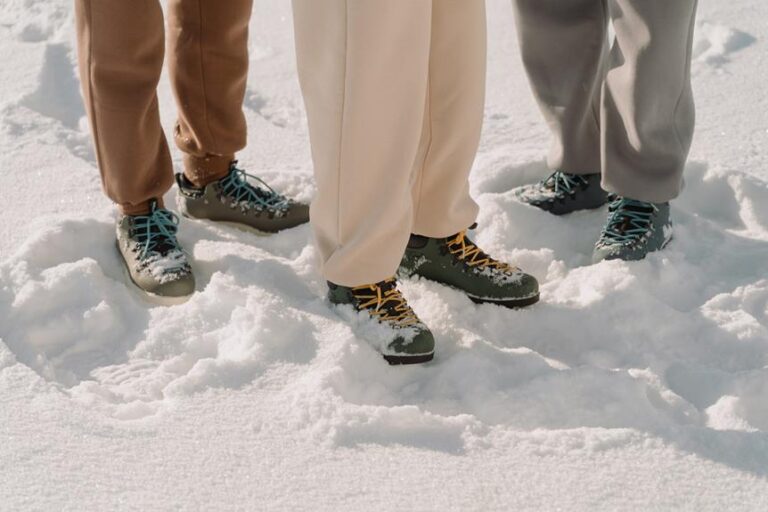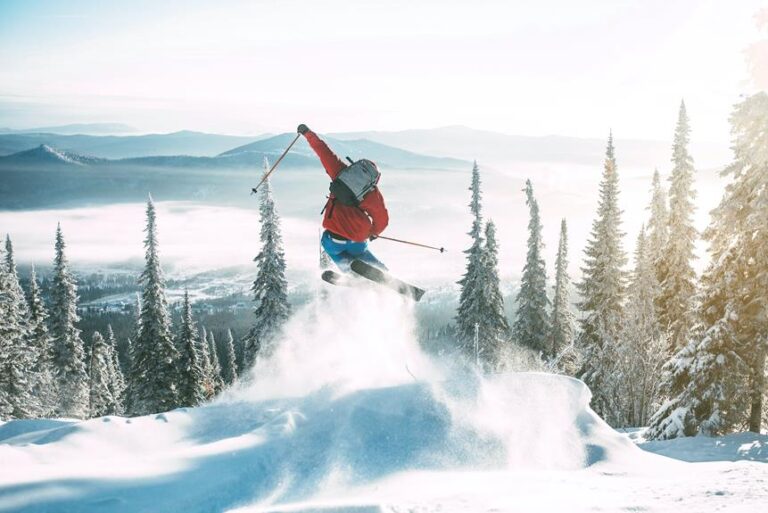How Long Do Ski Boots Last – Top Secrets Revealed
Have you ever wondered about the durability of your trusty ski boots? Well, let's just say they have a 'limited lifespan.'
But how limited is that lifespan? How long can you rely on your boots before they start showing signs of wear and tear? The answer may surprise you.
Stick around as we uncover the factors that affect the longevity of ski boots and explore when it might be time to bid farewell to your old faithfuls.
Factors Affecting Ski Boot Lifespan
To understand the factors that can affect the lifespan of your ski boots, you need to consider a few key elements.
Ski boots, like any other gear, have a limited lifespan. However, with proper care and maintenance, you can extend their longevity.
Firstly, the frequency of use plays a significant role. If you hit the slopes regularly, your ski boots will experience more wear and tear. The more you use them, the faster they may deteriorate. Similarly, the intensity of use matters too. If you engage in aggressive skiing or participate in high-impact activities, your boots may wear out more quickly.
Secondly, maintenance and care are essential. Cleaning your ski boots regularly, drying them properly, and promptly replacing worn-out parts can significantly extend their lifespan. Neglecting these tasks can lead to premature deterioration.
Thirdly, the quality of materials used in your ski boots is crucial. Boots made with durable, high-quality materials tend to last longer than those made with lower-quality materials. Investing in good quality ski boots can save you from having to replace them frequently.
Lastly, the age of your ski boots should also be considered. If your boots are several years old and still in good condition, it's a testament to their durability. However, even the best boots have a lifespan, and after a certain point, they may not provide the same level of performance and support as newer models. Generally, ski boots should last around 100-200 days of use, depending on various factors.
Signs It's Time to Replace Your Ski Boots
If you've noticed cracks or visible damage on the plastic shell of your ski boots, it's a clear indication that it's time to replace them. Ski boots are designed to withstand the rigors of the slopes, but over time, wear and tear can take a toll on them. One of the most obvious signs that your boots are past their prime is when you see cracks or damage on the outer shell. These cracks can compromise the structural integrity of the boots and make them less effective in providing support and protection.
Another sign that your ski boots need replacing is if you have loose or broken buckles or straps. These play a crucial role in securing your feet and ankles in the boots, and any issues with them can affect your skiing performance and safety. Additionally, significant wear on the sole or heel of the boot is a clear indication that it's time for new boots. The sole and heel provide traction and stability, and when they're worn down, they can't perform their function properly.
Inability of the boots to properly flex or provide support is another sign that it's time to consider replacing them. Ski boots should allow for a certain amount of flexibility to allow for natural movements while skiing. If your boots feel stiff or don't provide the support you need, it's a sign that they're no longer in good shape.
Lastly, an uncomfortable fit or pressure points while skiing are clear signs that you need new ski boots. Your boots should fit snugly but comfortably, without causing any pain or discomfort. If you find yourself constantly adjusting or experiencing discomfort, it's time to invest in a new pair of boots.
How to Extend the Lifespan of Your Ski Boots
Regular maintenance and proper storage are key to maximizing the longevity of your ski boots. To extend the lifespan of your ski boots, there are a few important steps you can take.
Firstly, make sure to regularly clean and dry your boots after each use. This will help prevent moisture and bacteria buildup, which can lead to deterioration.
Additionally, storing your boots in a cool and dry place is essential. Excessive heat or direct sunlight exposure can cause premature aging and damage to the boot shells.
It is also important to replace any worn-out or damaged parts promptly. This includes not only the outer shell but also the liner. A new liner can greatly improve the fit and comfort of your boots, enhancing their longevity.
When the early season arrives and you haven't worn your ski boots in a while, it's crucial to check them for any signs of damage or wear. Inspect the shells for cracks or any other issues that might affect their performance. If you notice any problems, it's best to have them repaired or replaced before hitting the slopes.
Average Lifespan of Different Types of Ski Boots
After taking the necessary steps to extend the lifespan of your ski boots, it's important to understand the average lifespan of different types of ski boots. Ski boots typically last about 200 skier days according to manufacturers' suggestions. However, it's worth noting that the lifespan of ski boots can vary depending on factors such as skier type, size, and how well they're maintained.
If you ski frequently and are an aggressive skier, your ski boots may wear out sooner than someone who skis less often or is more conservative on the slopes. Additionally, heavier skiers may put more strain on their boots, leading to a shorter lifespan.
It's also important to consider the condition of the boots' liners. Liners may pack out before the shells lose integrity, indicating a need for replacement even if the shells are still in good condition. Upgrading to a more advanced boot may also be necessary as your skiing skills improve over time.
If you're considering purchasing a new pair of ski boots, be sure to check the manufacturer's recommendations and consult with a professional boot fitter for guidance. They can help you find the right fit and provide valuable insight on the lifespan of different types of ski boots.
When to Invest in New Ski Boots
Wondering when it's time to invest in new ski boots? It can be a tough decision, but there are a few key signs to look out for.
Regularly check for signs of wear and tear on the boot shell, such as cracks or visible damage. If you notice any of these issues, it's time to start considering a replacement.
Another factor to consider is the comfort and fit of your boots. If you experience persistent pain or discomfort while skiing, it may be a sign that your boots are no longer providing the support you need.
Additionally, if you've recently purchased new skis and notice a decrease in performance and control on the slopes, it might be time to invest in new boots that are better suited to your equipment.
Lastly, pay attention to the condition of your boots' buckles, straps, sole, and heel. Loose or broken components, significant wear, or an inability to provide proper flex and support are all indicators that it's time for an upgrade.
Keep in mind that timely gear checks are essential for safety and preventing equipment failure. So, don't hesitate to invest in new ski boots if you notice any of these signs, even if your current boots appear to be in good condition.
Frequently Asked Questions
How Do You Know When Ski Boots Need Replacing?
You know ski boots need replacing when you see signs of wear and tear on the toe and heel pieces, cracks in the shell, or disintegration of the liners. These are indicators of ski boot deterioration and lifespan.
How Do You Know if Ski Boots Are Worn Out?
Look for signs of wear and tear on the toe and heel pieces, check for cracks or damage on the plastic shells, and pay attention to packed out liners. These indicators will help you determine if your ski boots are worn out and need replacement.
Are 10 Year Old Skis Still Good?
Are 10 year old skis still good? It depends on the condition and usage. If they have been well-maintained and not heavily used, they could still be functional. However, advancements in ski equipment technology may make newer skis more advantageous.
How Often Should You Replace Skis?
Replace your skis every 4 years or if they feel dead and can't be tuned anymore. Upgrading for better performance as your skills advance is common. Skiing frequency, skier type, and desire for new technology also impact replacement.
Conclusion
In conclusion, taking proper care of your ski boots and regularly inspecting them for signs of wear will help extend their lifespan.
With an average lifespan of about 200 skier days, it's important to replace your ski boots when you notice signs of deterioration such as cracks, wear and tear, or liner packing out.
Investing in new ski boots when necessary will ensure your safety and performance on the slopes.






